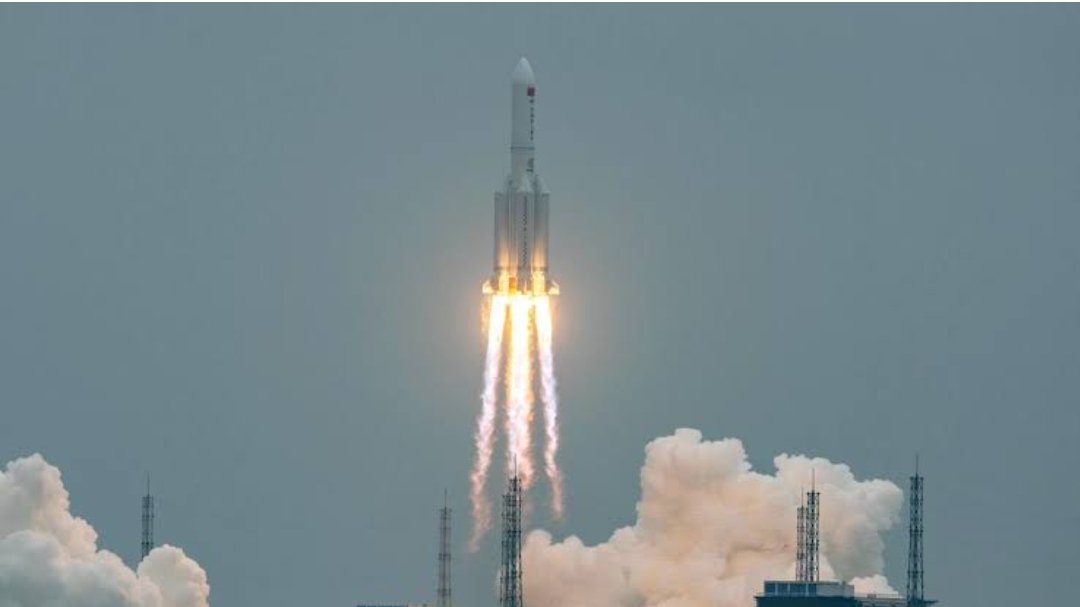Keypoints:
- Chinese Long March 5B is expected to enter Earth’s atmosphere this weekend, said Mike Howard who is a spokesperson of Defense Department.
- Reports say that debris has hit the earth’s surface in previous occasions too without posing threat to life or safety and hence, there is no reason to panic.
- The rocket is expected to return to Earth on May 10, plus or minus two days.
After launching first module from the Tianhe space station, part of the huge rocket is going to fall back to Earth and is likely to make an uncontrolled re-entry to an unknown landing point.
On April 29, from Wenchann in China’s Hainan province, a 30 metre high core of Long March 5B rocket has launched the “Heavenly Harmony” unmanned core module into low earth orbit.
Jonathan McDowell, who is an astrophysicist at the Astrophysics Center at Harvard University has said that, “It’s potentially not good.”
“Last time they launched a Long March 5B rocket they ended up with big long rods of metal flying through the sky and damaging several buildings in the Ivory Coast,” he said.
“Most of it burned up, but there were these enormous pieces of metal that hit the ground. We are very lucky no one was hurt.”
“The risk that there will be some damage or that it would hit someone is pretty small — not negligible, it could happen — but the risk that it will hit you is incredibly tiny. And so I would not lose one second of sleep over this on a personal threat basis,” he said.
McDowell says some pieces of the rocket will survive re-entry and that it would be the “equivalent of a small plane crash scattered over 100 miles”.
What’s bad is that it’s really negligent on China’s part. Things more than ten tonnes we don’t let them fall out of the sky uncontrolled deliberately,” McDowell said.
According to a statement from Defense Department spokesperson Mike Howard, the Chinese Long March 5B rocket is expected to enter earth’s atmosphere around May 8, the CNN report said. The US Space Command is tracking the rocket’s trajectory, he said. The exact location where the debris is going to land is difficult to determine until it is a few hours away due to the speed in which it is travelling, he added.
– “We expect it to reenter sometime between the eighth and 10th of May. And in that two-day period, it goes around the world 30 times. The thing is traveling at like 18,000 miles an hour. And so if you’re an hour out at guessing when it comes down, you’re 18,000 miles out in saying where,” Howard told CNN.

